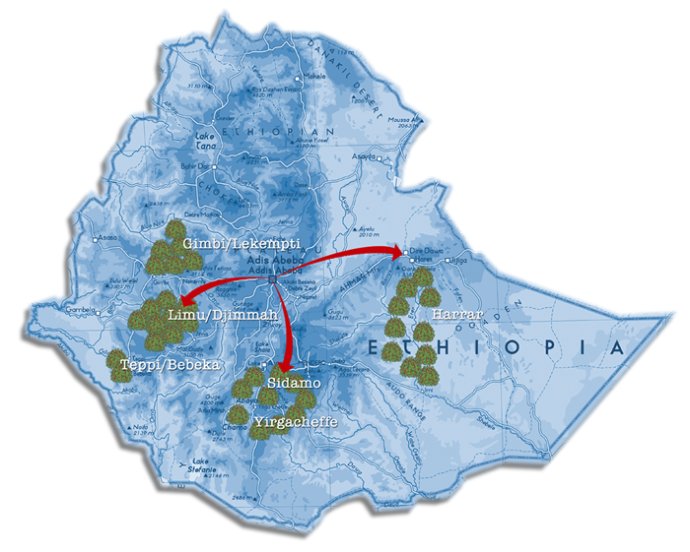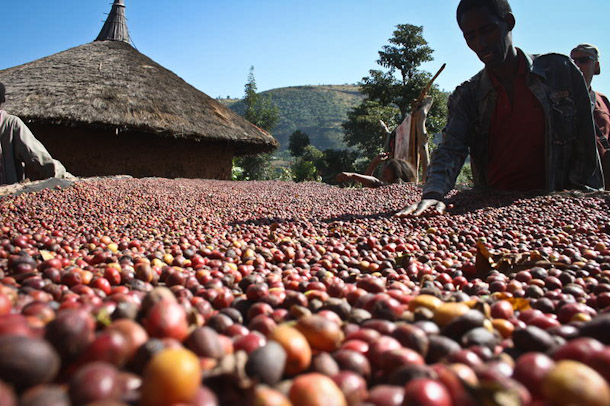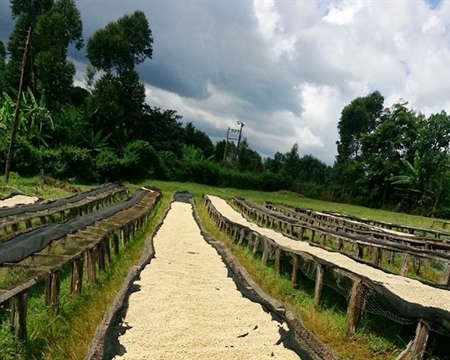Harar Hara, an Ethiopian Ethiopia boutique coffee producing area, is an eastern Ethiopian producing area.
Professional barista communication, please pay attention to coffee workshop (Weixin Official Accounts cafe_style)
Harar is a famous producing area in eastern Ethiopia, the representative of ET sun coffee, and also the classic of fine coffee world sun treatment, or natural treatment.
Harar City History
Harar is a veritable ancient city with more than 1300 years of history. Although archaeologists believe that the city was founded in the tenth century, legends have led people to believe that the city must have been older.
Harar is regarded as the fourth holy city among Ethiopian Muslims and is one of the few Islamic cities in Christ ET.
Around 1550, the Islamic rulers of Harar built a wall around the city, four meters high, with five gates, which still exist today. This structure is called jegol,"the walled city." Within 3.5 square kilometers of the city wall, there are 82 mosques and 102 holy tombs. Harar was once known as the "forbidden city", and trespassing by heretics was punishable by death. In the 1990s, the city walls and numerous historical sites within them were recognized as World Heritage Sites by UNESCO.
Harar's golden age was in the 16th century, when Harare coffee was already famous, and by the 18th century Harar had developed into a famous trading center. After Addis Ababa was established, the importance of harar began to diminish. In 1902, Dire Dawa was established as a new harar, and harar's status was further reduced.
Harar existed mainly as an independent regime throughout its long history, ruled by egypt from 1875 to 1884, briefly independent in 1885, and incorporated into ethiopia in 1887.

Harar Coffee
Harar coffee is representative of ET garden coffee, and the variety is a local ancient species.
Harar coffee is a traditional sun-treated coffee. The fresh coffee is picked and dried in the sun. During the drying process, the fruit will be accompanied by a certain degree of fermentation. The coffee seeds absorb the aroma and taste of the pulp and finally reflect it in the cup. In addition, many harar coffee berries are left directly on trees to dry.
Sunlight harar is known for its full body and red wine flavor. Blueberry and dark chocolate are common words in cup reviews. Sun-harar is a bit more freewheeling than washed coffee.
From picking to processing, almost all processes are handled manually. Even shelling is done manually.
Harar coffee is usually divided into three categories: longberry, shortberry and mocha. Longberry, long berry, refers to the larger individual beans; shortberry, short berry, consists of smaller beans; mocha, mocha, consists of round beans. In addition, common reference to the number of defective beans divided into grades, common are G4, G3.
Harar residents, like other ET areas, coffee is a part of life, and the famous ET coffee ceremony is also daily here.
Ethiopia Fine Coffee Region: Holy City Harar

Harar Coffee: A Challenge from Qat
Harar coffee is a darling of the boutique world. Harar coffee, however, faces challenges.
The challenge comes partly from an increasingly complex climate, including harar and nyeri in kenya, where irregular climate change brings drought, pests and haze to coffee cultivation.
Harar's coffee plantations, on the other hand, face challenges from another cash crop.
Qat, or "khat," pronounced/chat/, is a locally grown plant whose leaves are also called qat.
Chewing leaves qat is part of tradition in many parts of arabia and africa. Qat is a stimulant. Just like coffee ceremony, chewing qat, people gather to chat, it is also part of daily life. After the Qat party, people return to their work lives. Chewing qat, like drinking coffee, is a way of socializing.
Qat seems to have an advantage over coffee. All farmers have to do is pick leaves, bundle them and sell them. Unlike coffee, which requires complex processing. In addition, the growing demand for qat in arabia and africa is also driving the expansion of cultivation. Qat costs less than coffee sales.
Important Notice :
前街咖啡 FrontStreet Coffee has moved to new addredd:
FrontStreet Coffee Address: 315,Donghua East Road,GuangZhou
Tel:020 38364473
- Prev

General situation of Variety planting region, Harvest season and Geography in Coffee Bean producing area of Colombia
For the exchange of professional baristas, please follow the coffee workshop (Wechat official account cafe_style) about the coffee planting area and harvest season in Colombia. Columbus coffee cultivation is distributed along the Andes Mountains, from south to north, roughly divided into northern producing areas (green), central producing areas (orange, purple) and southern producing areas (yellow), in which the orange-purple area has two primary and secondary areas.
- Next

Indonesia coffee beans Indonesia coffee producing area Manor Introduction Origin Features
Professional barista communication, please pay attention to coffee workshop (Weixin Official Accounts cafe_style). Indonesia is a large archipelago country composed of many volcanic islands. It has excellent coffee growing environment and latitude. Each island has different characteristics due to different terrain and climate.。Indonesian coffee growing islands include Sumatra, Sulawesi, Java
Related
- Detailed explanation of Jadeite planting Land in Panamanian Jadeite Manor introduction to the grading system of Jadeite competitive bidding, Red bid, Green bid and Rose Summer
- Story of Coffee planting in Brenka region of Costa Rica Stonehenge Manor anaerobic heavy honey treatment of flavor mouth
- What's on the barrel of Blue Mountain Coffee beans?
- Can American coffee also pull flowers? How to use hot American style to pull out a good-looking pattern?
- Can you make a cold extract with coffee beans? What is the right proportion for cold-extracted coffee formula?
- Indonesian PWN Gold Mandrine Coffee Origin Features Flavor How to Chong? Mandolin coffee is American.
- A brief introduction to the flavor characteristics of Brazilian yellow bourbon coffee beans
- What is the effect of different water quality on the flavor of cold-extracted coffee? What kind of water is best for brewing coffee?
- Why do you think of Rose Summer whenever you mention Panamanian coffee?
- Introduction to the characteristics of authentic blue mountain coffee bean producing areas? What is the CIB Coffee Authority in Jamaica?

